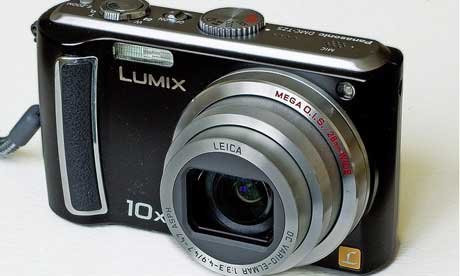
You don’t need an expensive SLR camera to take an impressive shot. The results from compacts can be just as good – see our top tips to improve your shots
Compact cameras are getting more sophisticated. Although size for size the sensors used in a larger digital SLR tend to produce better results, the simplicity of a point-and-shoot allows you to be creative without worrying about camera settings.
However, even the most advanced compacts can’t perceive the photographer’s intentions. At best, automatic functions are an educated guess and there are times when it all goes wrong.
Luckily, you don’t have to ditch all automatic functions and set everything yourself. You can still use your camera’s clever tools to do most of the work, but by making a few simple tweaks you can greatly improve your chances of getting it all right.
Different light sources give off a range of colour temperatures, from red through to dark blue. Humans can’t distinguish these colour casts; the brain automatically corrects them. Digital cameras have a similar function: the Auto White Balance (AWB). The trouble is the camera doesn’t know what you are photographing: it can’t tell the difference between the rich red colours of a sunset, which you want to preserve, and the orange cast from an incandescent bulb, which you probably want to eliminate. The AWB will seek to cancel out all colour casts – good and bad.
The solution is to switch off AWB and use the ‘daylight’ setting. This makes your digital camera behave in the same way as film, and is perfect for most conditions. At sunrise and sunset the warmer light will be reproduced in your pictures as atmospheric red tinges. If you are shooting under artificial light, to cancel out the colour cast switch the AWB on. If shooting in fluorescent light, select the ‘fluorescent’ or ‘incandescent’ settings. They will usually give better results than AWB.
If you’re taking pictures at night or aiming to introduce blur, you’ll need a longer exposure – so you need to instruct your camera to use a slower shutter speed. Once light levels drop below a certain level, your camera will automatically set a faster speed and switch on the flash. Set the flash to ‘off’ and the camera will use a slower shutter speed, which will allow the lower light levels at night to register.
Many cameras also have an Auto ISO feature. This selects a more sensitive setting in low light so that the camera’s shutter speed is faster. Switch this off if you want to shoot longer exposures using a tripod.
If you light a whole scene with flash, the results are often harsh. Flash light is very directional and falls off drastically over distance; this is why the backgrounds often look very dark. To improve this, set your flash to the ‘slow-sync’ setting. The flash will fire as normal but the camera will also set a slower speed – if it thinks it needs one – so that the ambient light registers as well. If light levels are really low, then be careful of blur in parts of the picture lit by ambient light – although this can be a nice effect if you are shooting a party or dance performance.
This is the setting to use if you want to take a picture of someone in front of a floodlit building at night. The flash will light the person and the slow speed will allow the ambient light to register.
Most compacts have a significant delay between pressing the shutter and actually taking a picture – the time taken to focus the lens. Sometimes it is long enough for you to actually miss the shot; a moving object might have left the frame before the shutter is tripped. To avoid this, prefocus your image: press the shutter-release button halfway down and hold – this will focus the lens and lock the focus. When you are ready to take the picture, just press the button all the way down.
Compact cameras have a range of picture scene modes. Essentially these tell your camera what you are photographing so it can bias the decisions and settings towards that subject. For example, a ‘snow’ setting will bias the white balance towards correcting the blue cast reflected from snow. It will also lengthen the exposure so that the snow registers as white, not grey.
If you set sunset mode the camera will set the white balance to preserve the warm red colours, as well as selecting a slower speed to ensure that they register, rather than using a flash. An action mode will bias towards faster shutter speeds to freeze movement.
If you’re disappointed with your exposures when you view your pictures on the LCD screen, all is not lost. The exposure-compensation facility will let you override the exposure that the camera thinks is right. If the picture looks too light, set the compensation to minus one stop, which will make the next picture darker. If the picture is too dark, set the camera to plus one stop. It is possible to be more accurate if you check the histogram on the image, but this is a quick way of improving the exposure without getting too technical. Remember to set the exposure compensation back to zero when you have finished.